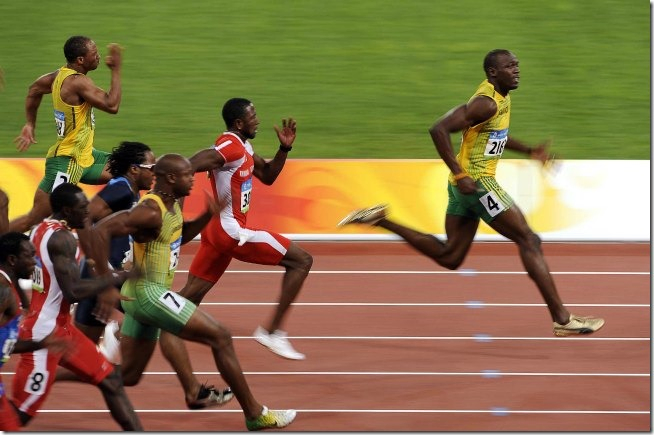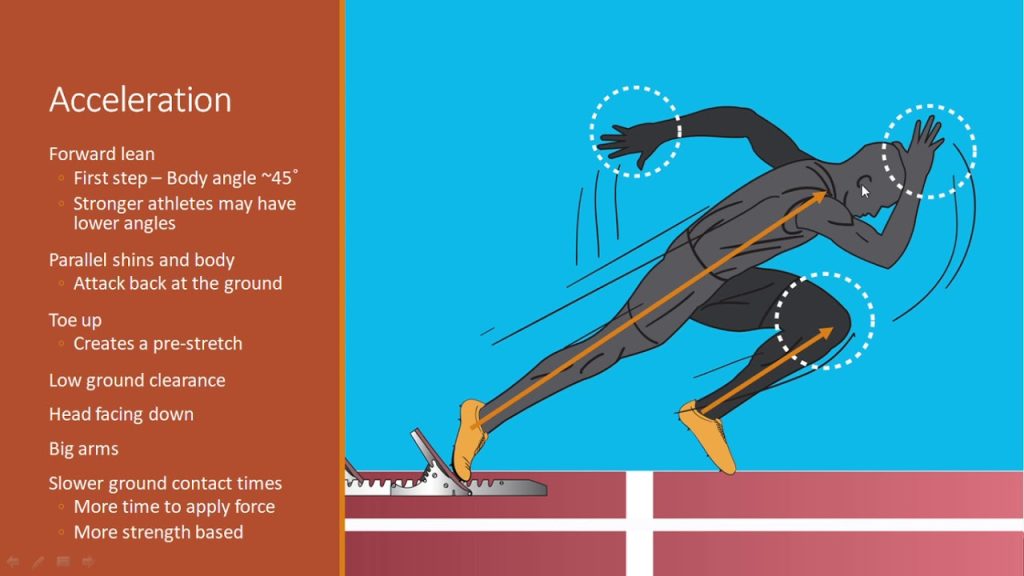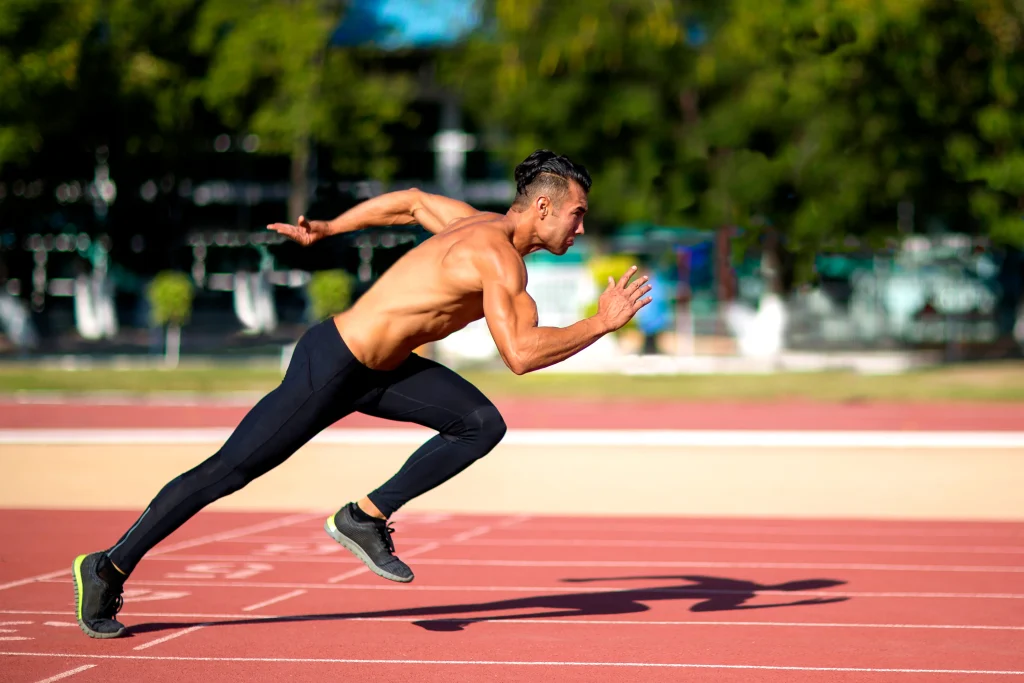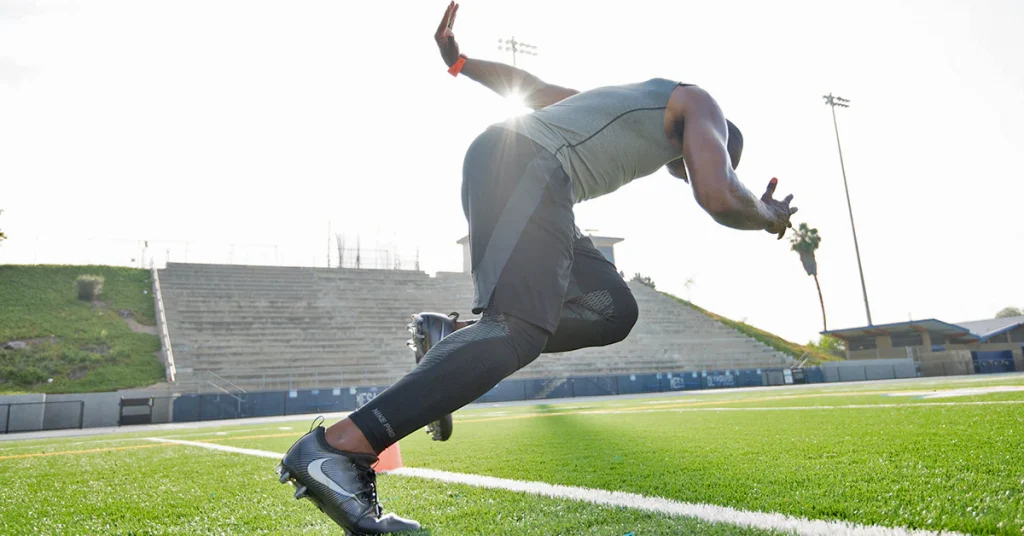
Max velocity is the peak phase of sprinting, where the athlete achieves their highest speed. In the 40-yard dash, this phase typically occurs between 20–40 yards, depending on the athlete’s skill and efficiency in acceleration.
While acceleration builds momentum, max velocity is about maintaining posture, rhythm, and force application under high speed. It’s not just about going fast—it’s about staying fast without breaking down.
Why Max Velocity Matters in the 40
Most athletes spend too much time trying to “power through” the entire sprint. In reality, once max velocity is reached, the key is minimizing deceleration and maintaining mechanical efficiency.
Done correctly, max velocity:
- Enhances overall 40 time through efficient stride frequency and length
- Reduces injury risk from overstriding or collapsing posture
- Transfers into sport by improving top-end chase, separation, and recovery speed
Key Components of Max Velocity Mechanics
1. Upright Posture
At max velocity, the torso should be tall and stacked—hips under shoulders, chin level, eyes forward. No arching, no reaching. Postural control is critical.
2. Front-Side Mechanics
The majority of the sprint action now happens in front of the body. Knees drive up, thighs lift to parallel or slightly above, and the heel recovers under the hamstring.
Efficient sprinters spend more time in front-side mechanics and minimize backside drag.
3. Ground Contact and Flight Time
Ground contact becomes extremely short (as low as 0.08–0.10 seconds), while air time increases. The athlete is essentially bouncing across the ground with precision.
4. Foot Strike Position
Feet strike directly under the hips. Contact is quick, light, and elastic, like a spring. Overstriding or heel striking at this phase drastically reduces speed and increases risk.
5. Arm Action
Arms remain compact, rhythmic, and aggressive. Elbows drive from the shoulders, with hands moving from cheek to hip. Loose arms lead to wasted motion.
Common Max Velocity Errors
- Overstriding (trying to open up too much)
- Upright posture too early or too late
- Excessive backside mechanics (low heel recovery, extended trail leg)
- Collapsing at the hips or trunk under fatigue
- Arms swinging across the body
Training Max Velocity
Top-end speed must be trained with intentional drills and rest intervals to maintain high quality. Include:
- Flying sprints (e.g., 10–20 yard buildups into 10–20 yard sprints)
- Sprint-float-sprint or sprint-float-sprint-float sequences
- A-skip and B-skip progressions
- High-speed bounding and straight-leg runs
- Sprint-assisted runs (resisted or overspeed, cautiously applied)
The Takeaway
Max velocity is about refinement, not force. At this phase, the athlete must be elastic, coordinated, and composed. The 40-yard dash rewards athletes who can build into top speed and hold it cleanly—not just explode out of the blocks.
Posture, rhythm, and precision win the second half of the 40.
Sources
- Mann, R. V. (2013). The Mechanics of Sprinting and Hurdling. CreateSpace Independent Publishing.
- Clark, K. P., & Weyand, P. G. (2014). Are running speeds maximized with simple-spring stance mechanics? Journal of Applied Physiology, 117(6), 604–615.
- Rabita, G., et al. (2015). Sprint mechanics and field 100-m sprint performance in world-class male sprinters. International Journal of Sports Medicine, 36(11), 893–898.
- Haugen, T., et al. (2019). Sprint conditioning of elite soccer players: Worth the effort or waste of time? Sports Medicine, 49(5), 707–719.





